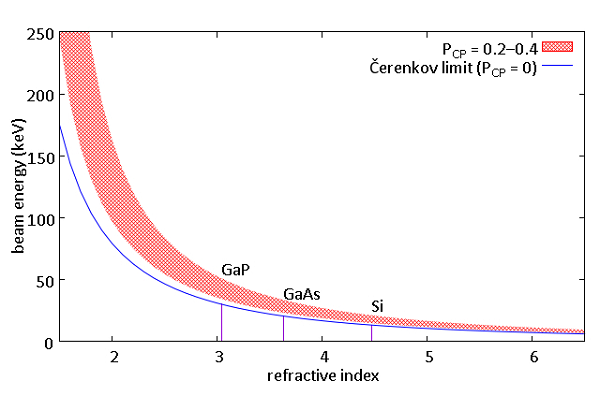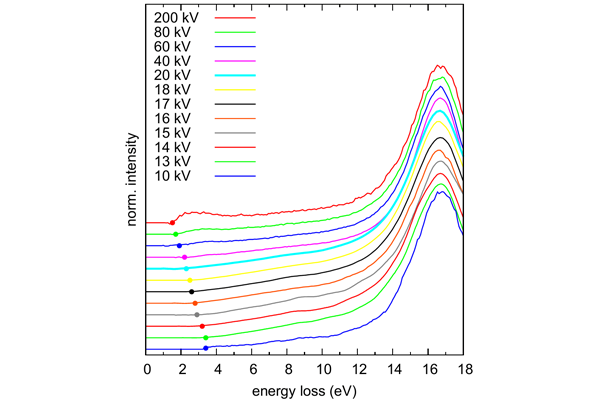IT-5-P-2431 Experimental detection of the Čerenkov limit in Si, GaAs and GaP
Since the advent of monochromated electron energy loss spectrometry (EELS) the experimental detection of band gaps in semiconducting materials is of great importance. But due to the fact that the swift electron probe excites relativistic energy losses, like Čerenkov losses [1] and the corresponding light guiding modes, the band gap is hidden below them. Therefore a technique was developed to excavate them mathematically [2]. Another possibility is to reduce the beam energy [3] such that the speed of the swift probe electron v does not exceed the speed of light inside the sample c0/n (with n as the refractive index).
The investigated specimens are Si, GaAs and GaP single crystals. Sample preparation was performed by grinding and ion milling using a low voltage ion mill for the final preparation step in order to remove surface damage from prior milling.
With the TECNAI G20 at TU Vienna we are able to record EELS spectra in the energy range of 6–100 keV. Consequently we can experimentally verify the Čerenkov limit of Si, GaAs and GaP, which is 13.3, 20.6 and 30.1 keV, respectively (Fig. 1). The probability of Čerenkov photon excitation per unit path length of the electron inside the specimen PCP is proportional to
PCP = 1/c0 – 1/(v2ε1),
with ε1 as the real part of the samples dielectric function [3]. The theoretical values are computed for PCP equals to zero. The shaded area in Fig. 1 represents the beam energy needed in order to excite 0.2 to 0.4 Čerenkov photons.
Above the limit Čerenkov losses and light guiding modes cause a red shift of the signal onset in low loss spectra. The signal onset is shifted to higher energies when reducing the electron beam energy and there is no shift below the limit (Fig. 2). It must be noticed, that only the direct gap at 3.6 eV of Silicon is measured.
[1] E. Kröger, Z. Physik 216 (1968) 115-135.
[2] M. Stöger-Pollach, A. Laister, P. Schattschneider, Ultramicroscopy 108 (2008) 439-444.
[3] M. Stöger-Pollach, Micron 39 (2008) 1092-1110.
M. H. acknowledges FEI Company for financial support.

